Modifiers change the appearance of a horse's coat, without diluting the colour. The genetic causes of most modifiers have not been discovered, yet they can sometimes drastically impact the way a horse looks. This may cause horses that are the same colour according to a genetic test, to still look very different from each other.
¶ Grey
Grey is caused by the dominant G-allele of the grey gene. It causes a progressive loss of pigment. Horses will be born with the coat determined by their genes, but will gradually turn grey with each shed and eventually become nearly “white" in colour. Grey foals often show hyperpigmentation: their coat will appear darker and more saturated. Foals will also often show “grey goggles”: white/grey hairs around the eyes that make the foal look like it is wearing glasses.
| Grey foal - Akhal-Teke Horse |
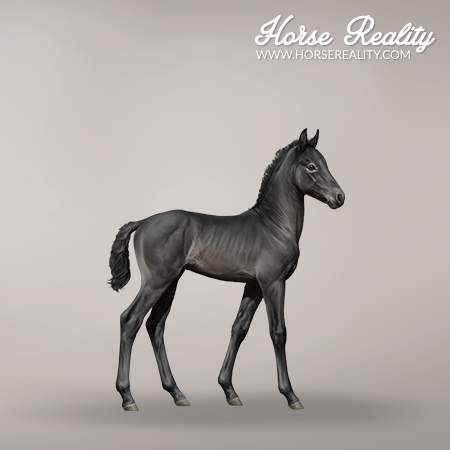
|
While going through the greying process, horses will usually pass through different “stages” of grey (dapple grey, steel grey,…). In Horse Reality, horses don't move between all the different grey stages but they randomly get assigned a specific stage of grey once they turn into an adult (3 years old).
| Grey modifier - Akhal-Teke Horse and Arabian Horse | |||

|

|

|

|
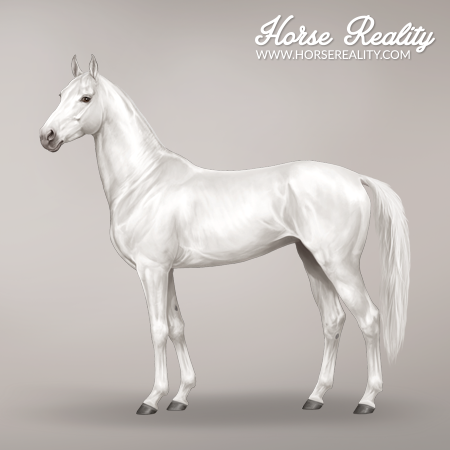
|
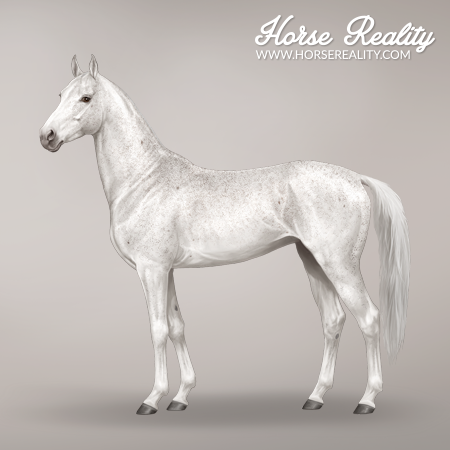
|

|
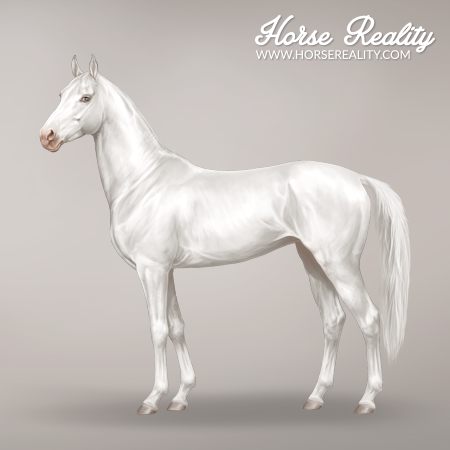
|
Below, the resulting phenotype of each genotype is listed:
- G/G = Grey
- G/g = Grey
- g/g = Not grey
Grey can be tested at the Laboratory.
¶ Flaxen
Flaxen (f) lightens the mane, tail and feathering of chestnut-based horses to a yellow or nearly white colour.
| Flaxen modifier - Mustang Horse | |

|
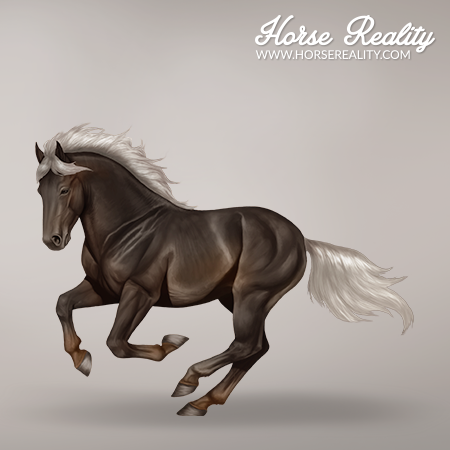
|
In Horse Reality, flaxen is caused by the recessive f-allele (also called fl) of the hidden flaxen gene. Since the genetics behind flaxen haven't been discovered yet in real life, it can't be tested.
Below, the resulting phenotype of each genotype is listed:
- e/e + f/f = Flaxen chestnut
- e/e + F/f = Chestnut
- e/e + F/F = Chestnut
¶ Sooty
Sooty (STY, sty) or smutty causes a darkening of the coat in chestnut and bay-based horses. It can be expressed in many different ways. On Chestnut-based horses, it often mostly darkens the legs or lower body or changes the entire coat colour from red to a shade of brown. This is often named liver chestnut. On bay-based horses, sooty is expressed mostly over the topline and upper part of the body. Sooty can also cause very pronounced dapples on the coat.
| Sooty modifier - Arabian Horse | ||
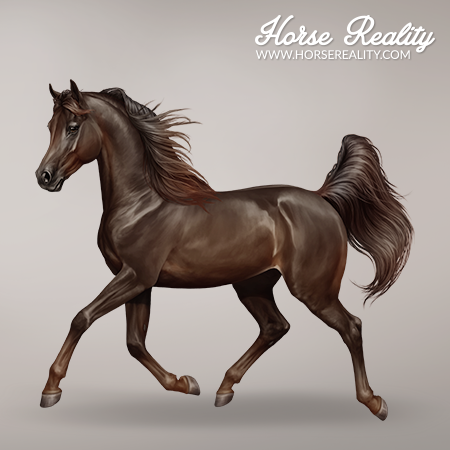
|

|
|
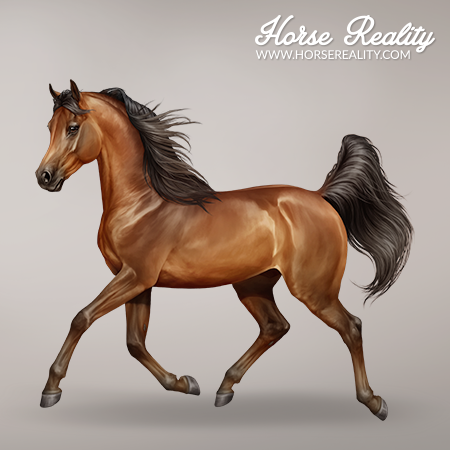
|

|

|
The genetic cause of sooty has not yet been discovered in real life. Therefore, it also remains untestable and hidden in the game. In Horse Reality, the dominance of sooty differs between breeds and sometimes even between coat colours. It may show in combination with other dilutions or modifiers in some breeds, but not in others.
¶ Pangaré
Pangaré (PA), also sometimes referred to as mealy, only affects chestnut and bay-based colours. It mainly lightens the areas above the muzzle and the eyes, and the underside of the body (flanks, belly).
| Pangaré modifier - Brumby Horse | ||

|

|

|
Since the genetics behind pangaré are still unknown, it is not possible to test for the allele responsible for pangaré in-game. In Horse Reality, the allele causing the pangaré phenotype is dominant.
Below, the resulting phenotype of each genotype is listed:
- E/_ + A/_ + PA/pa = (wild/seal brown) bay pangaré
- E/_ + A/_ + PA/PA = (wild/seal brown) bay pangaré
- e/e + PA/pa = chestnut pangaré
- e/e + PA/PA = chestnut pangaré
¶ References
- Bellone R., Sponenberg D. P., Equine Color Genetics, 4th Edition, 2017, Wiley-Blackwell
- UC Davis Veterinary Genetics Laboratory; https://vgl.ucdavis.edu/test/gray; Access: November 2022
- Generatio Center for Animal Genetics; https://generatio.de/en/guidance/lexicon/grey-progressive-whitening-horse; Access: November 2022